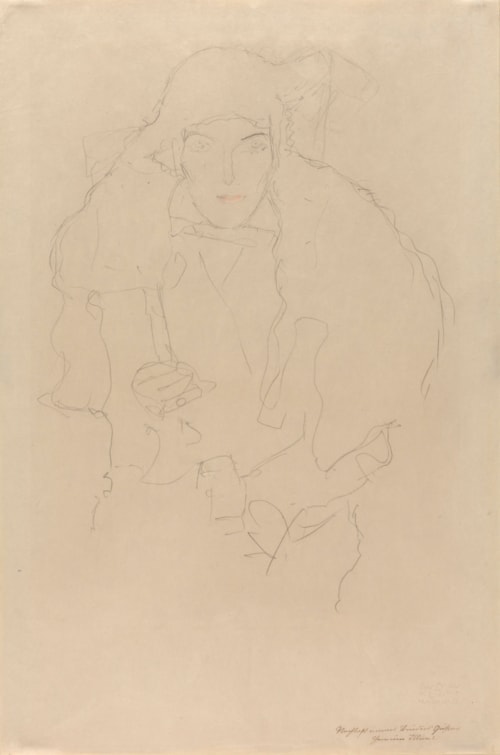
Gustav KLIMT
Vienna 1862 - Vienna 1918
Biography
Gustav Klimt was one of the foremost draughtsmen of the early 20th century. Over four thousand drawings by him are known today, the vast majority of which are drawn in black chalk or pencil, and occasionally in coloured pencils, as well as, more rarely, pen and ink. Many more drawings have been lost, however; the artist is known to have often thrown away his drawings, while some fifty sketchbooks were destroyed in a fire in 1945. Klimt regarded his drawings purely as working studies, and thus never sold them, although he would occasionally give some away. When a sheet left his studio in this way he would invariably sign it, but otherwise he rarely signed his drawings.
As has been noted, after about 1900 Klimt’s drawings ‘are almost exclusively of the human body, mostly rapid sketches in which he recorded a certain posture or detail of movement…The drawings were done very rapidly, and Klimt does not appear to have valued them once they had fulfilled their purpose.’ That Klimt did not regard his drawings too highly is seen in an anecdote recounted by the artist’s friend, the Austrian art critic Arthur Rössler: ‘Klimt valued this abundant evidence of his industrious and penetrating study of nature only as means to an end, and he destroyed thousands of leaves when they had fulfilled their purpose, or if they failed to combine maximum expressiveness with the application of a minimum of technique. On one occasion when I was sitting with Klimt, leafing through a heap of five hundred or so [drawings], surrounded by eight or nine cats meowing or purring, which chased each other around so the rustling leaves flew through the air, I asked him in astonishment why he let them carry on like that, spoiling hundreds of the best drawings. Klimt answered, “No matter if they crumple or tear a few of the leaves – they piss on the others and that’s the best fixative!”’
The Klimt scholar Marian Bisanz-Prakken has written of the artist that ‘His intensive study of the human – primarily the female – figure centred on the individual…Klimt drew obsessively, subjecting himself to a highly disciplined approach. He usually worked from life, whereby he would subordinate the models’ poses and gestures to an overarching design…As a creative draughtsman, Klimt was a law unto himself; as a result, the body of his works on paper is so rich and comprehensive that it must be viewed as a parallel universe, existing alongside his painterly oeuvre.’





